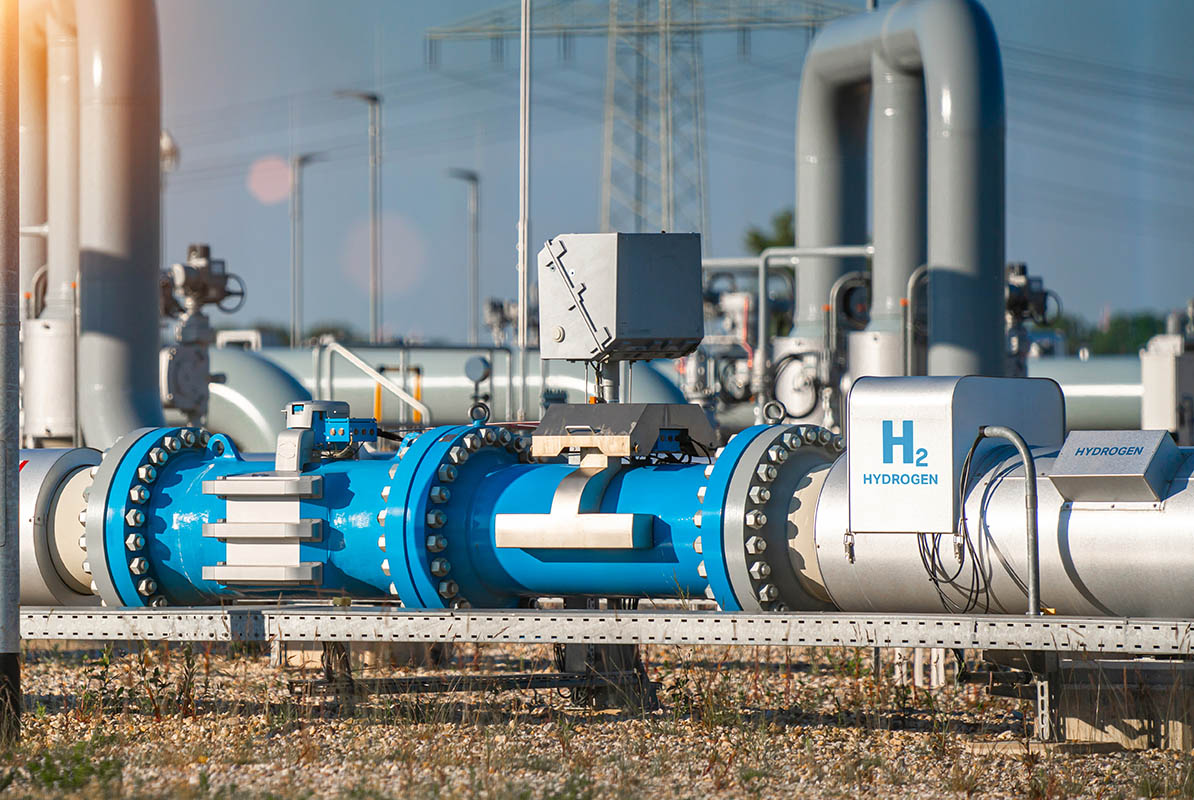Optimizing hydrogen production brings clean energy a step closer
Assessing the economic and environmental benefits of hydrogen production technologies could help KU researchers identify the greenest route to power and decarbonizing industry.
A transition toward a hydrogen-dependent global energy economy is one solution to achieve clean energy, while simultaneously mitigating the impacts of climate change. Existing production capacities, however, fall far short of what is needed to realize projected scenarios.
Using modelling to assess the potential of different hydrogen production processes, a team led by Khalifa University researchers Lourdes Vega and Ahmed Al Hajaj from the Research and Innovation Center on CO2 and Hydrogen (RICH) found that emerging methane pyrolysis technology has a lower overall environmental impact than existing methods.
“The next decade will be crucial for ensuring the production and use of low-carbon hydrogen as an energy vector,” says Vega. “This requires facilitating scaling-up production capacities and revamping current technologies in industrial sectors targeted for hydrogen use, while also developing infrastructure for transportation,” she adds.
Nearly 72% of global hydrogen production in 2020 was obtained by steam methane reforming (SMR) from natural gas without carbon dioxide capture. While SMR is the most commercially viable option, it has the disadvantage of high CO2 emissions.
Promising alternatives include production of blue hydrogen by integrating SMR with carbon capture, use and storage (CCUS) or green hydrogen from water electrolysis with renewable energy. Although both technologies have relatively high production costs, adopting blue and green hydrogen supply could be justified, considering the trade-off with low-carbon emissions, the researchers maintain.
“The next decade will be crucial for ensuring the production and use of low-carbon hydrogen as an energy vector.”
Lourdes Vega
Among the most promising alternative technologies, however, for producing zero carbon hydrogen turned out to be methane pyrolysis, in which thermal energy is applied to methane to break the chemical bond between carbon and hydrogen, generating hydrogen gas and a solid carbon product, with no direct CO2 emissions.
Unlike SMR, methane pyrolysis is a one-step process that does not require steam, and therefore no fresh water, as a feedstock, thus reducing industry’s contribution to water stress.
Hydrogen sulfide (H2S) offers an alternative to methane and water as a promising source of hydrogen. While H2S-based methane reforming (H2SMR) has been explored at lab scales, the large-scale technical, economic and environmental impact of these alternative technologies remains unexplored.
The researchers carried out a life cycle assessment to determine the environmental impact of five hydrogen production technologies (H2SMR, H2S pyrolysis, methane pyrolysis, SMR and SMR+CCUS) and assessed economic performance based on the total cost associated with hydrogen production.
They found that methane pyrolysis required the least amount of energy, consuming only 63% of the thermal energy needed for the benchmark SMR process. The energy associated with hydrogen production from H2SMR was 80% higher than SMR, and 14% higher than SMR coupled with CCUS.
“Given the absence of direct CO2 emissions and greater versatility of value-added products that could be generated, the additional energy associated with the H2SMR seems acceptable,” says Al Hajaj.
In terms of specific energy consumption related to energy inputs, methane pyrolysis is the least energy intensive process with minimum water footprint and economics comparable to SMR coupled with CCUS.
But the H2SMR process economics has the potential to significantly improve with the inclusion of revenue generated from sales of produced CO2 and sulfur.
Reference
Ali, S.M.; Alkhatib, I.I.; Al Hajaj, A. and Vega, L.F., How sustainable and profitable are large-scale hydrogen production plants from CH4 and H2S? Journal of Cleaner Production, 428, (2023). |Article




